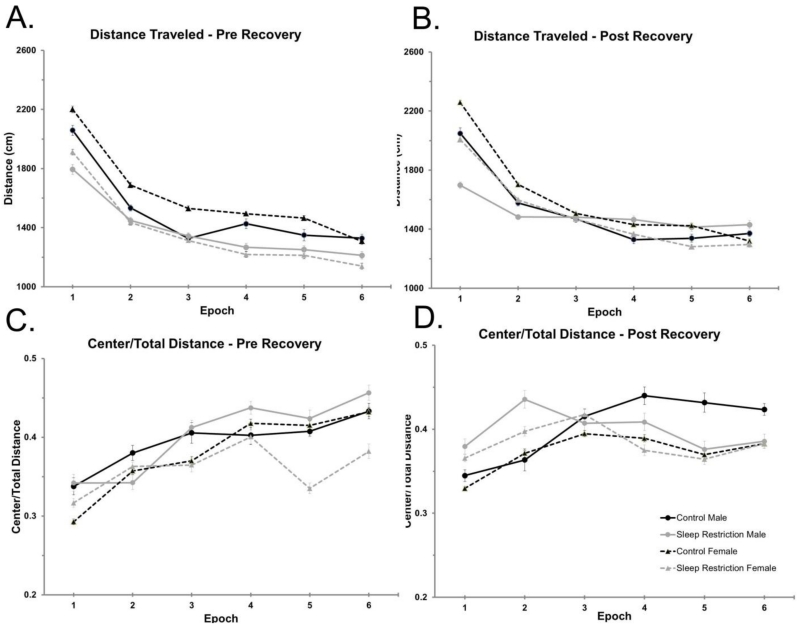Figure 1.
Decreased activity in the open-field arena following chronic sleep-restriction. (A) Horizontal distance traveled in the open-field (cm) is plotted by epoch (five min each) for a 30 minute test period for animals two days following completion of chronic sleep restriction. Main effects of condition and epoch were statistically significant indicating that sleep-restricted mice had reduced exploratory activity compared to controls and that all groups had higher levels of activity at first followed by evidence of habituation. (B) Distance traveled in the open field following four weeks recovery sleep. The Condition × Epoch and Sex × Epoch interactions were statistically significant, indicating that sleep-restricted mice reacted less to the novel environment than controls and that females reacted more to the novel environment than males. All mice showed some tendency to habituate to the novel conditions over the 30 min test (main effect of epoch). (C) The ratio of distance traveled in the center to total distance traveled two days following completion of chronic sleep restriction. The main effect of epoch, was the only statistically significant effect. (D) The ratio of distance traveled in the center to total distance traveled after four weeks of recovery sleep. The main effect of epoch was the only statistically significant effect, and the Condition × Epoch interaction approached statistical significance (p=0.055). Data plotted are the means ± SEMs for (A&C) 10 control male, 11 sleep-restricted male, 17 control female, and 15 sleep-restricted female mice, and for (B&D) 11 control male, 11 sleep-restricted male, 22 control female, and 16 sleep-restricted female mice. Error bars are largely within the confines of the symbol.

